https://fldmp.com/12-Vasco-Saas-Marketing/06-Optimizations/03-Increasing_Client_LTV.mp4
https://fldmp.com/12-Vasco-Saas-Marketing/06-Optimizations/03-Increasing_Client_LTV.mp4 - Part 1
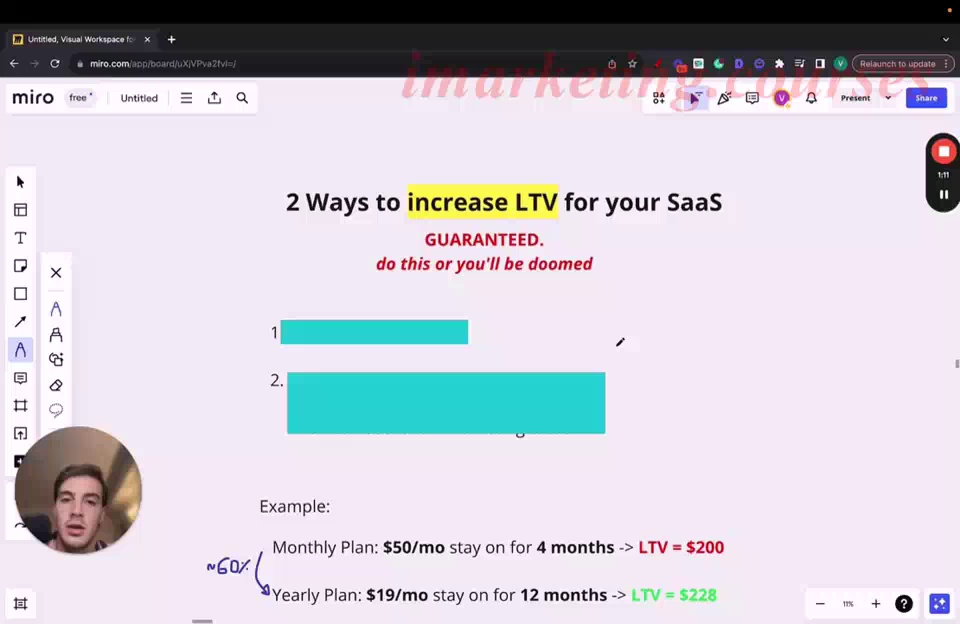
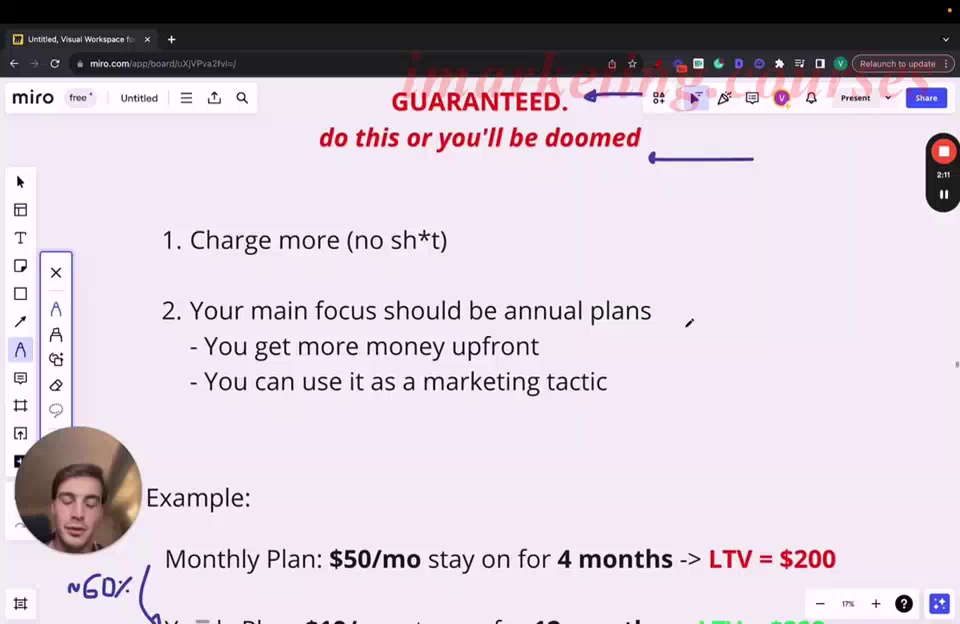
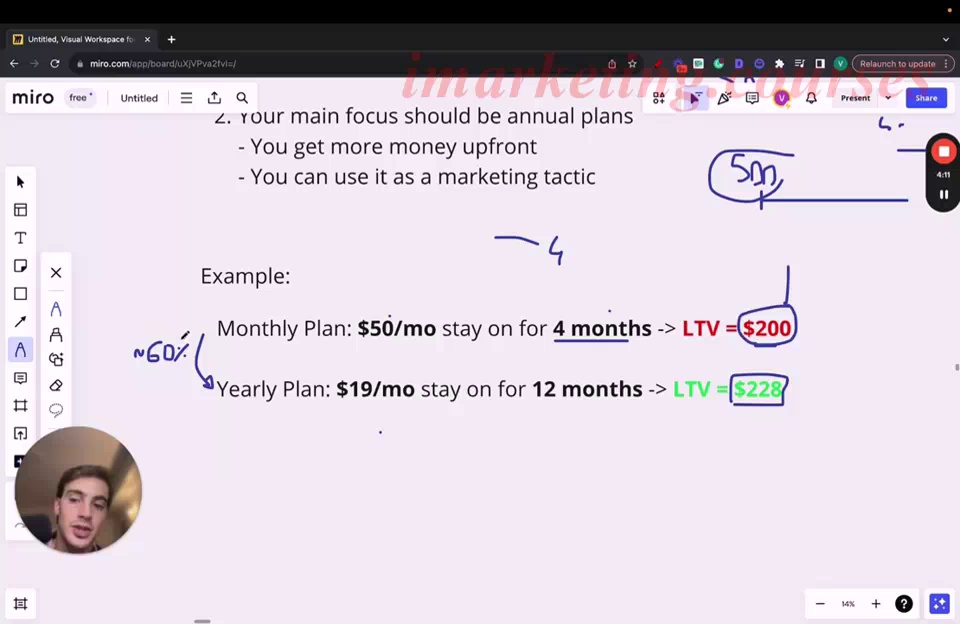
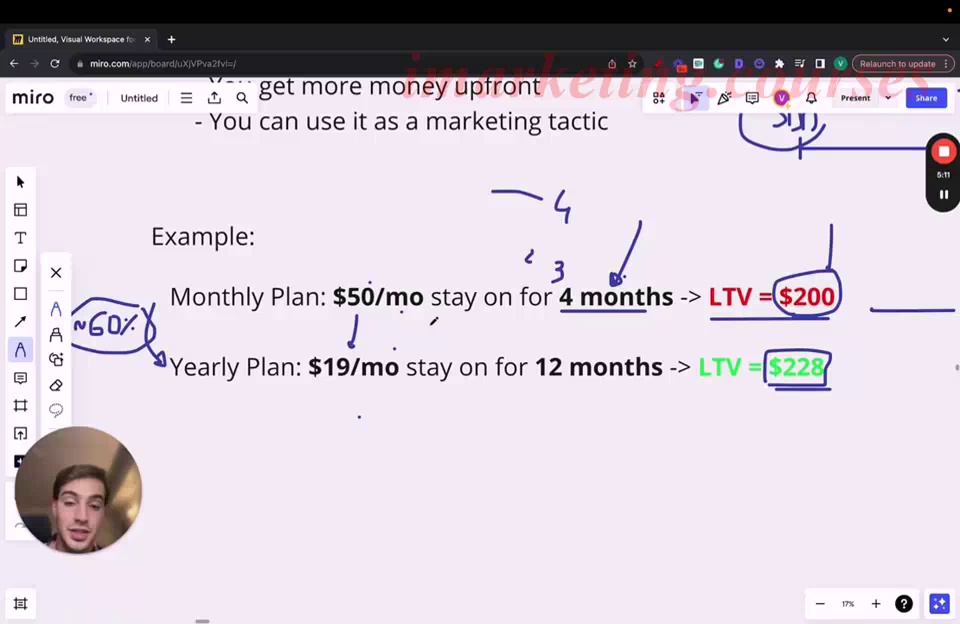
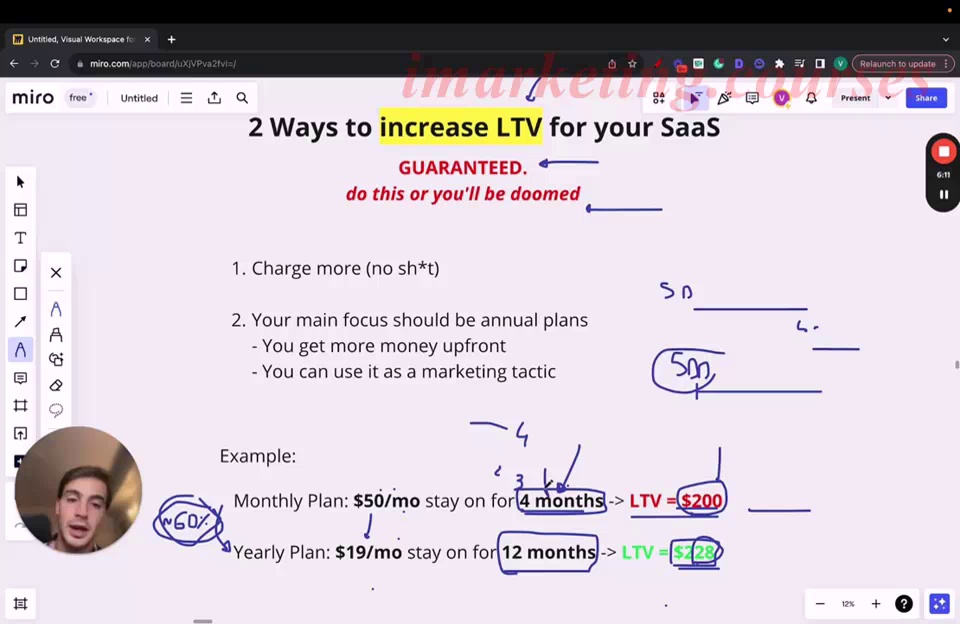
The narrator discusses two ways to increase lifetime value (LTV) for Software as a Service (SaaS) businesses. The first method is to charge more. He recommends increasing prices every six months as new features are added and the product improves.
The second and main focus should be on annual plans. The narrator explains that annual plans provide more money upfront, which is beneficial for reinvesting in marketing and acquiring new customers. He gives an example where a $50 monthly plan with an average customer retention of four months results in a $200 LTV.
By offering a discounted annual plan at $19 per month (paid in full), the business can increase LTV to $228 while providing customers with a 60% discount. This strategy not only increases revenue but also locks in customers for a full year.
The narrator emphasizes the importance of knowing your average customer retention period and monthly price to determine the optimal annual plan pricing. He states that the yearly plan should be at least $1 higher than the total value of the average customer lifespan on the monthly plan.
Extended customer retention also provides more opportunities for user feedback, which is crucial for product development. The narrator uses an analogy of building construction to illustrate the importance of user feedback in shaping the product to meet customer needs rather than the creator's vision.
In conclusion, the two main strategies for increasing SaaS LTV are: 1) charge more by regularly increasing prices, and 2) focus on annual plans that provide upfront revenue and extended customer engagement.
.https://fldmp.com/12-Vasco-Saas-Marketing/06-Optimizations/03-Increasing_Client_LTV.mp4 - Part 2


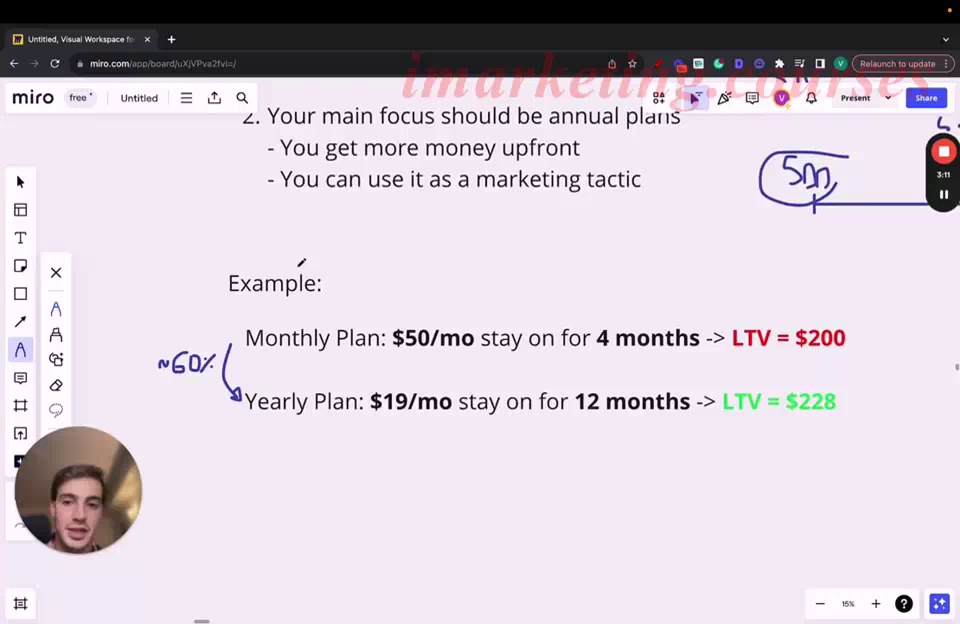



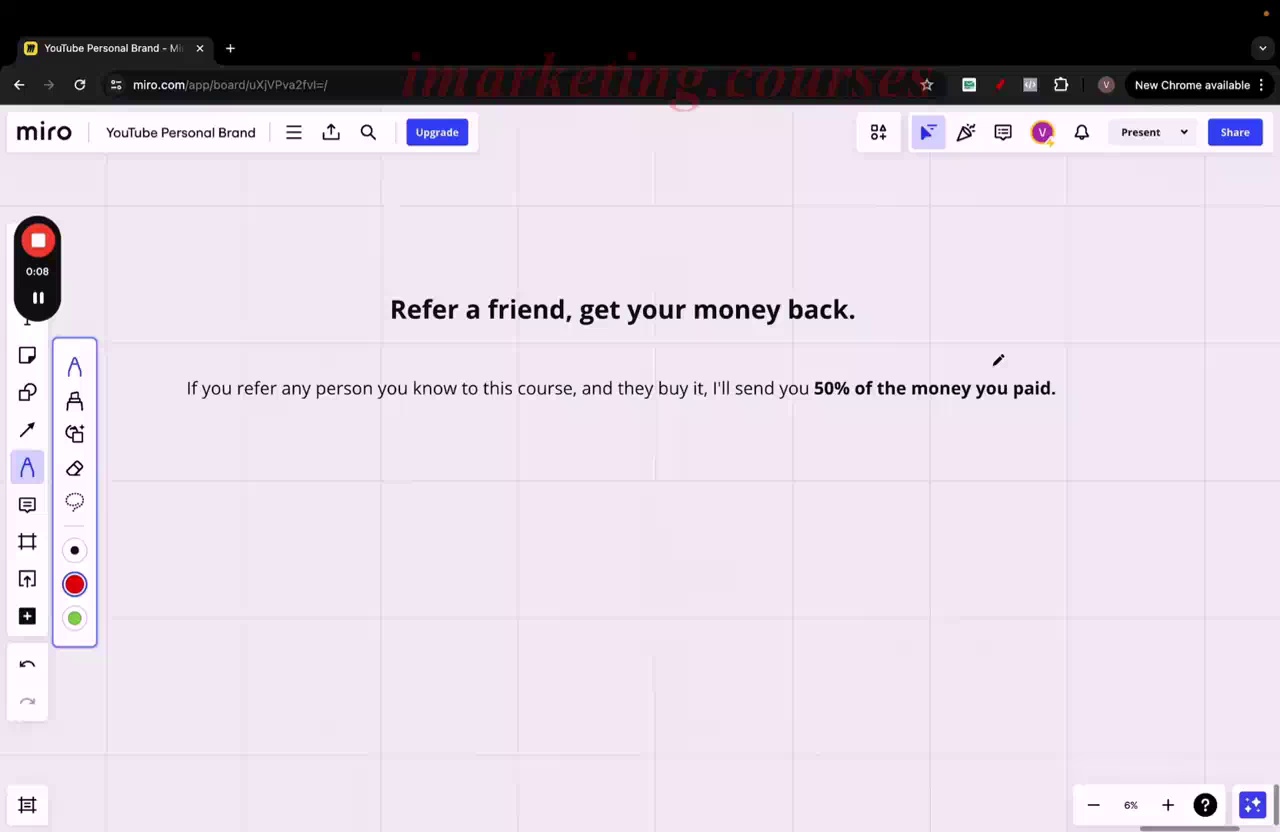
The narrator offers a 50% refund to course buyers who refer new customers. This allows buyers to recoup half their investment. The narrator suggests reinvesting the refunded money in tools for content creation.
Recommended investments include thumbnail makers, a microphone, and a ring light. The narrator uses a Shure microphone. These tools are described as relatively affordable, with the microphone being the most expensive.
To claim the refund, buyers should inform potential customers about the course and provide them with the purchase link. After a successful referral, buyers should email the narrator with the new customer's name. The narrator will then process the 50% refund.
This referral program benefits both the narrator and the buyers. It helps the narrator acquire more clients while allowing buyers to recover part of their investment. Buyers are free to use the refunded money as they choose, whether for recommended investments or personal expenses.
.https://fldmp.com/12-Vasco-Saas-Marketing/06-Optimizations/03-Increasing_Client_LTV.mp4 - Part 3







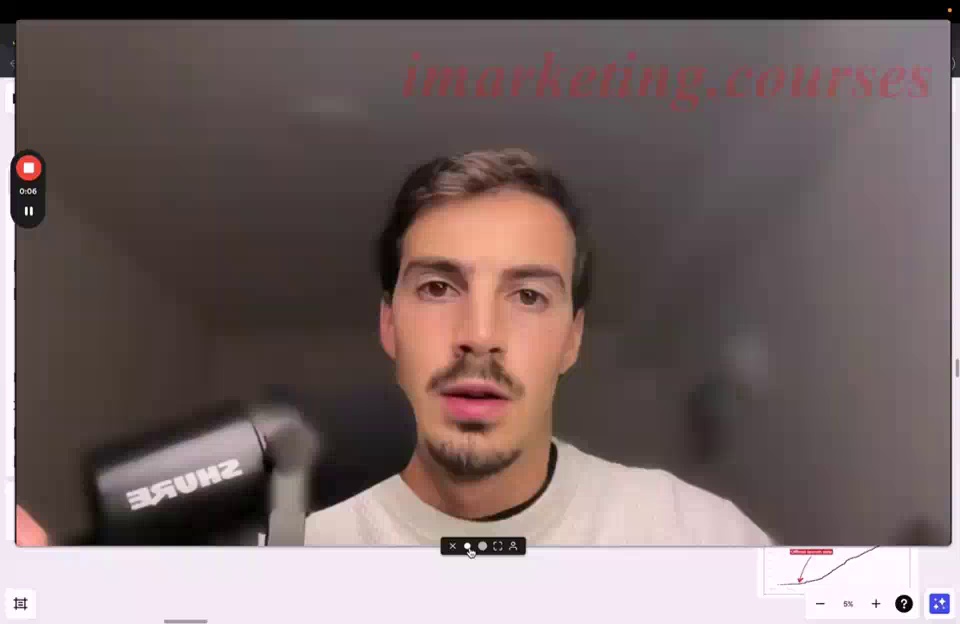
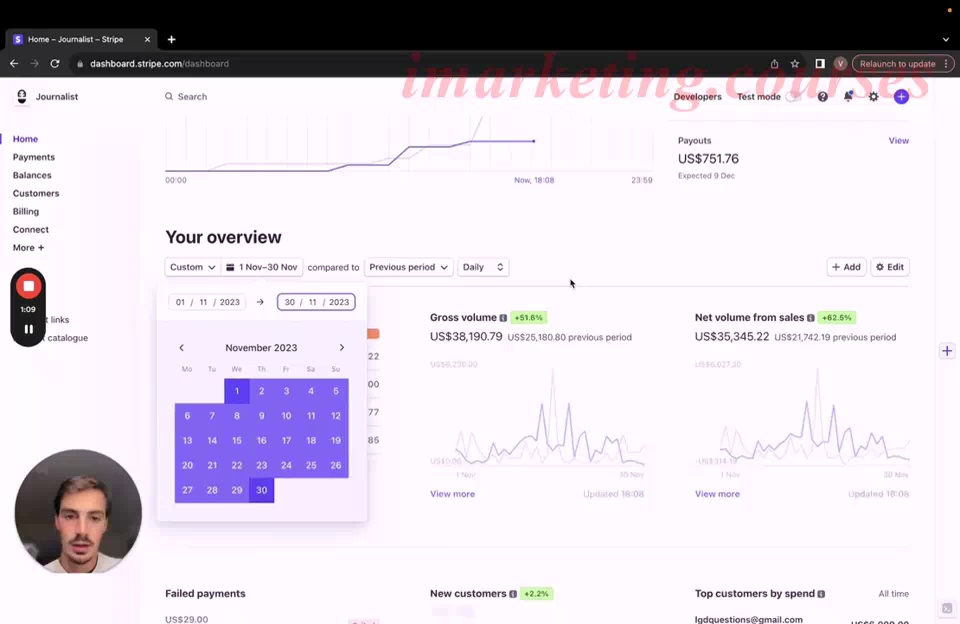
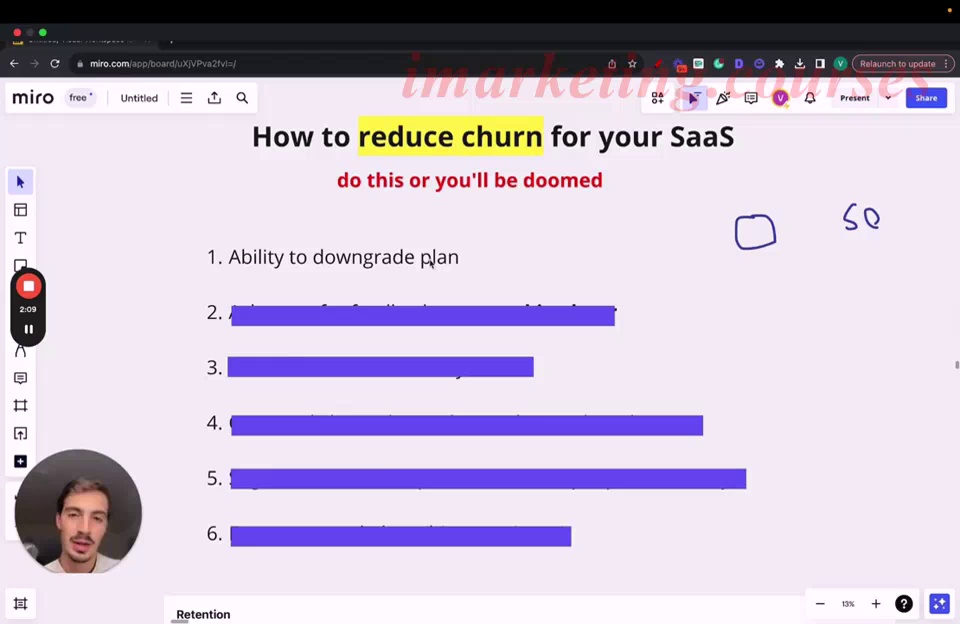
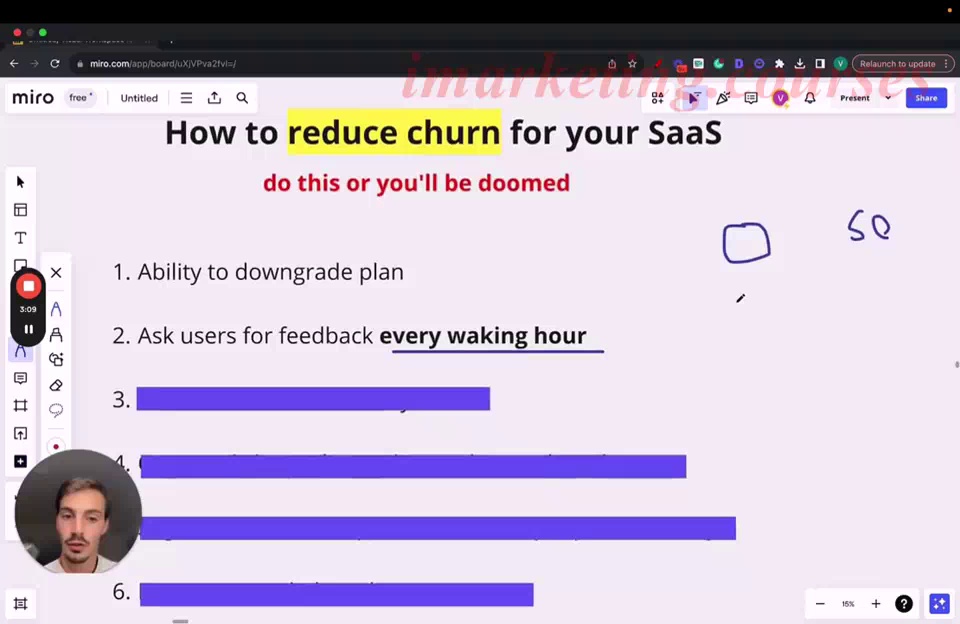
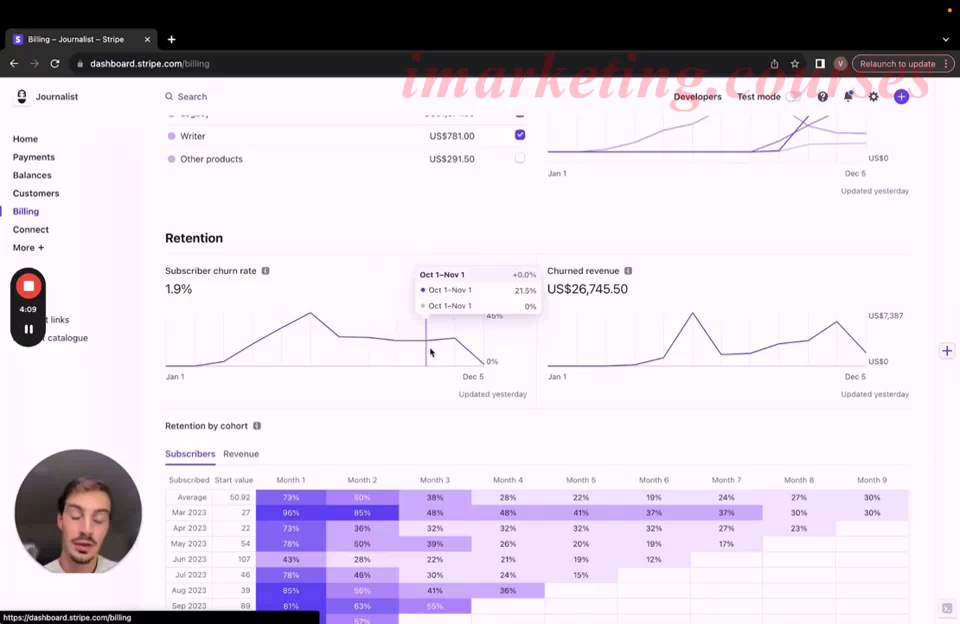
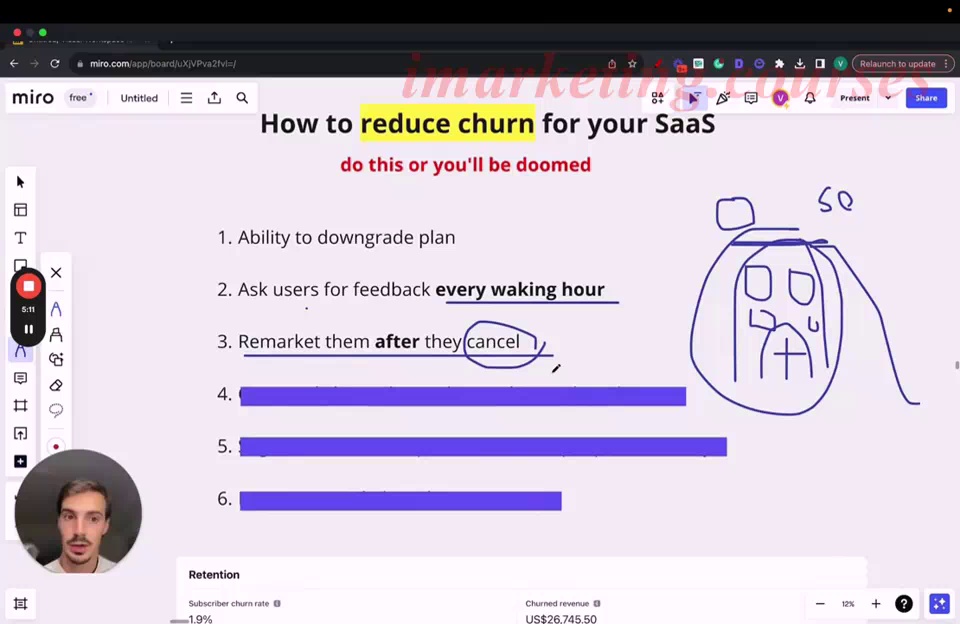
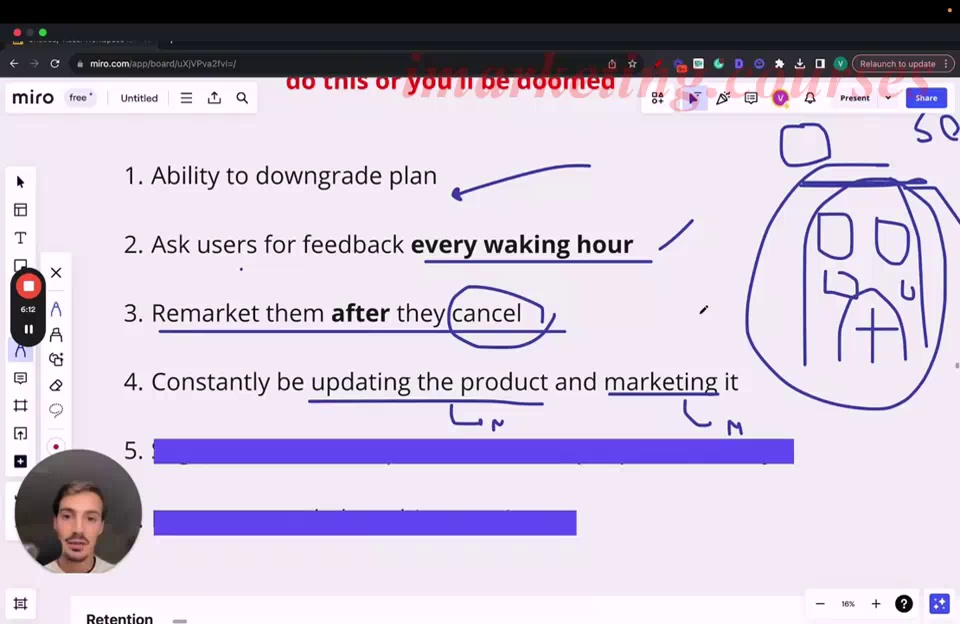
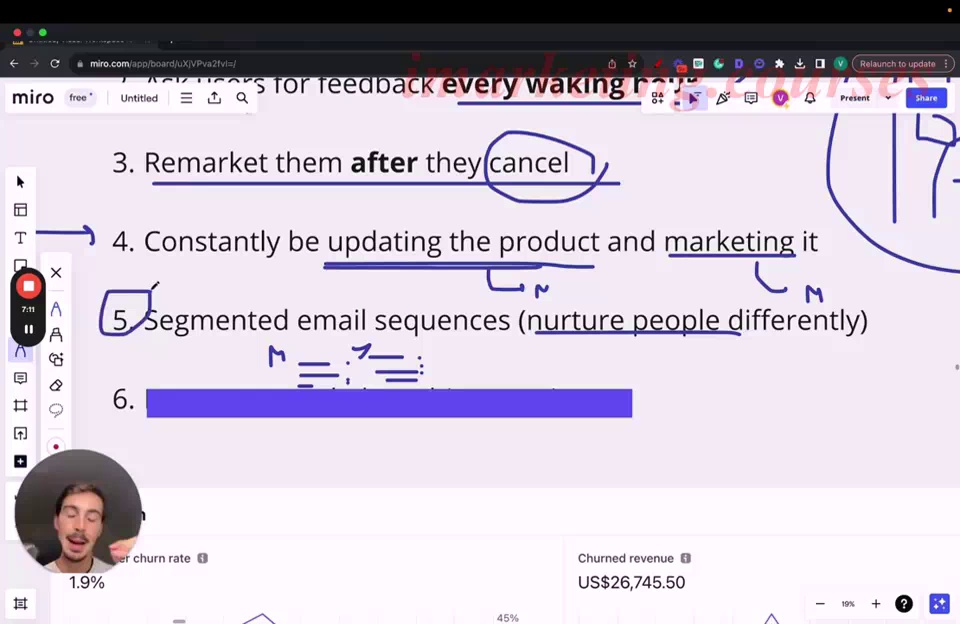
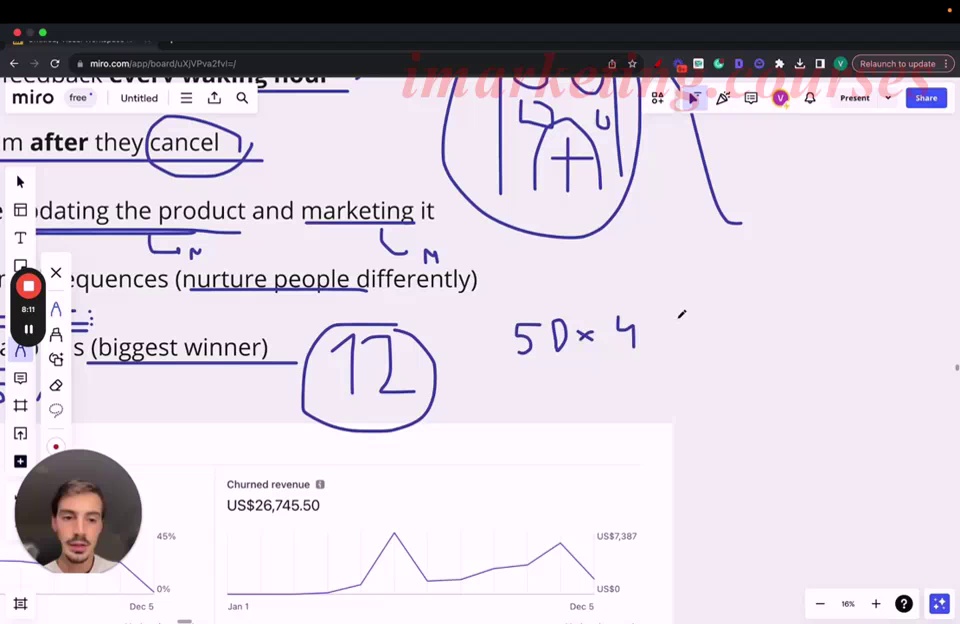
The narrator discusses how to reduce churn for SaaS businesses. He claims to have built a SaaS marketplace that grew to over $300,000 in sales over 12 months. His current SaaS is making $15,000 in MRR.
He presents six steps to reduce churn:
1. Offer the ability to downgrade plans. This allows customers to pay less instead of canceling completely.
2. Ask users for feedback constantly. This engages customers, improves the product, and makes users feel heard.
3. Remarket to canceled customers. Use email sequences to win back churned customers by addressing their reasons for leaving.
4. Continuously update and market the product. Regularly add features and make noise about updates on social media and through email.
5. Segment email sequences. Treat different customer groups (monthly vs. yearly, different tiers) with tailored communication.
6. Focus on annual plans. Offer significant discounts on yearly plans to lock in customers for longer periods, increasing lifetime value.
The narrator claims these steps reduced their churn from 45% to 21%. He emphasizes that asking for feedback is the most important step for reducing churn and scaling the business.
The narrator mentions his SaaS had a gross revenue of $38,000 in November, which was higher than the MRR due to yearly plan purchases. He suggests offering up to 50% discounts on yearly plans to increase customer lifetime value.
.https://fldmp.com/12-Vasco-Saas-Marketing/06-Optimizations/03-Increasing_Client_LTV.mp4 - Part 4
















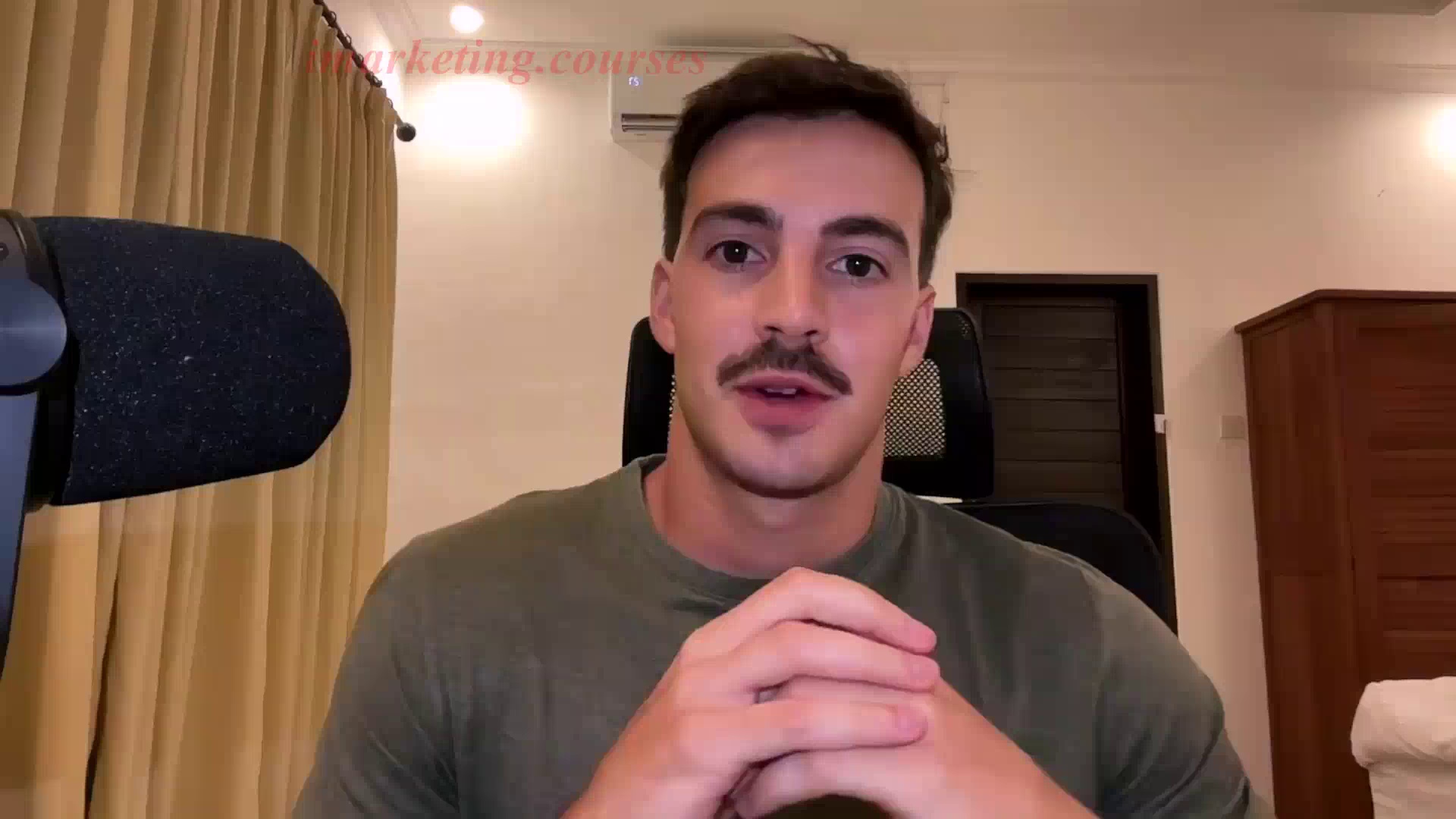
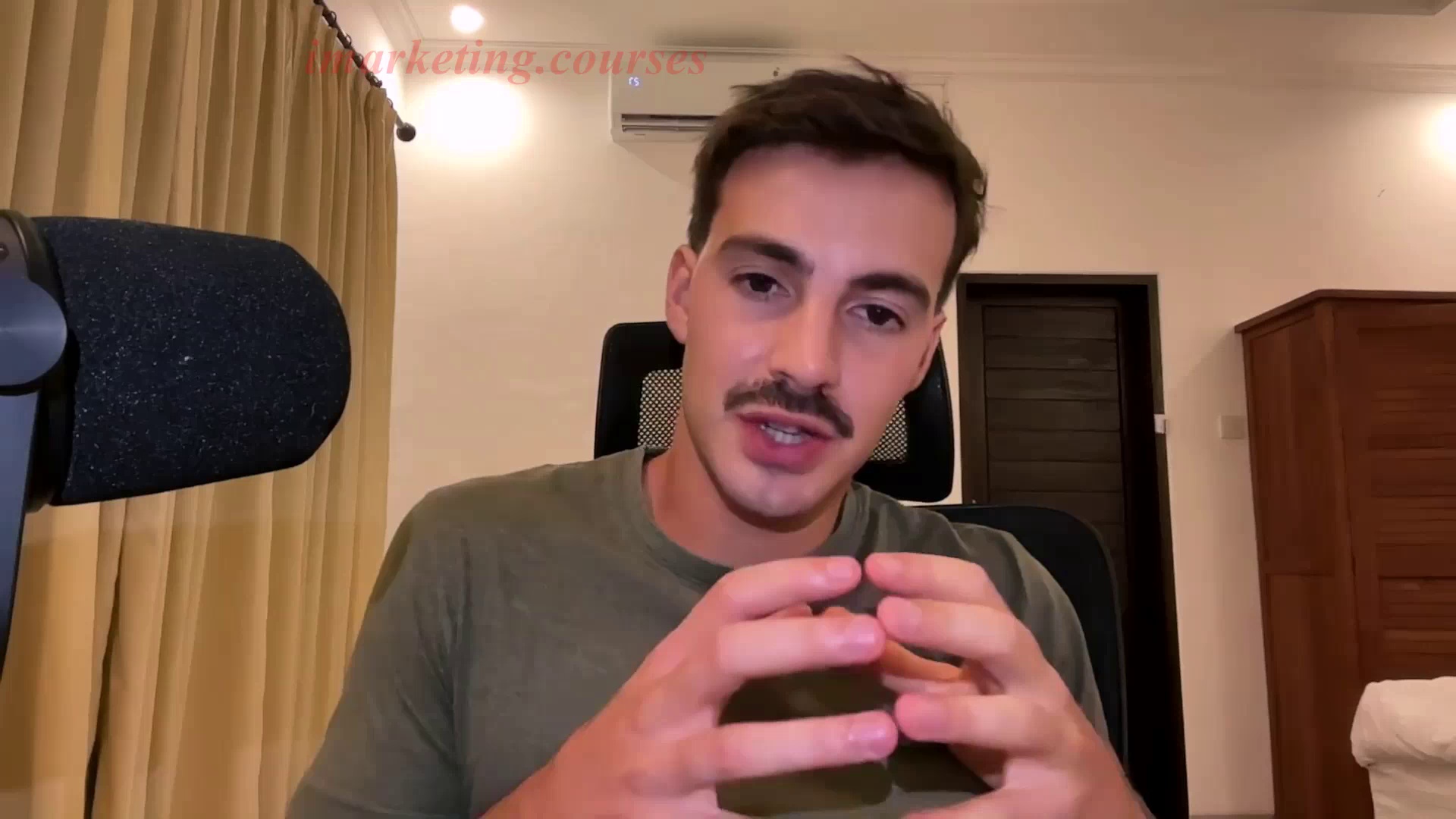
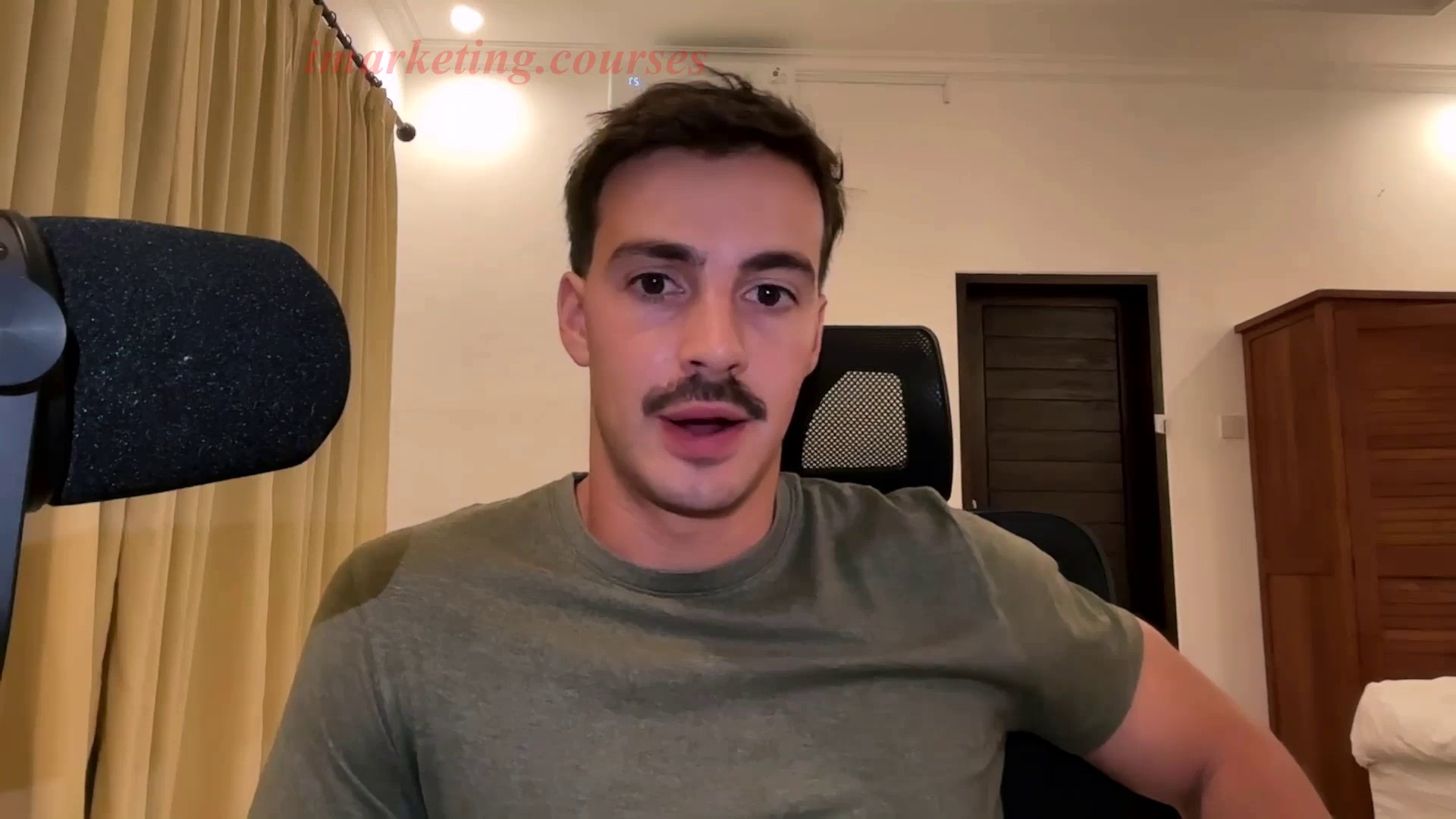
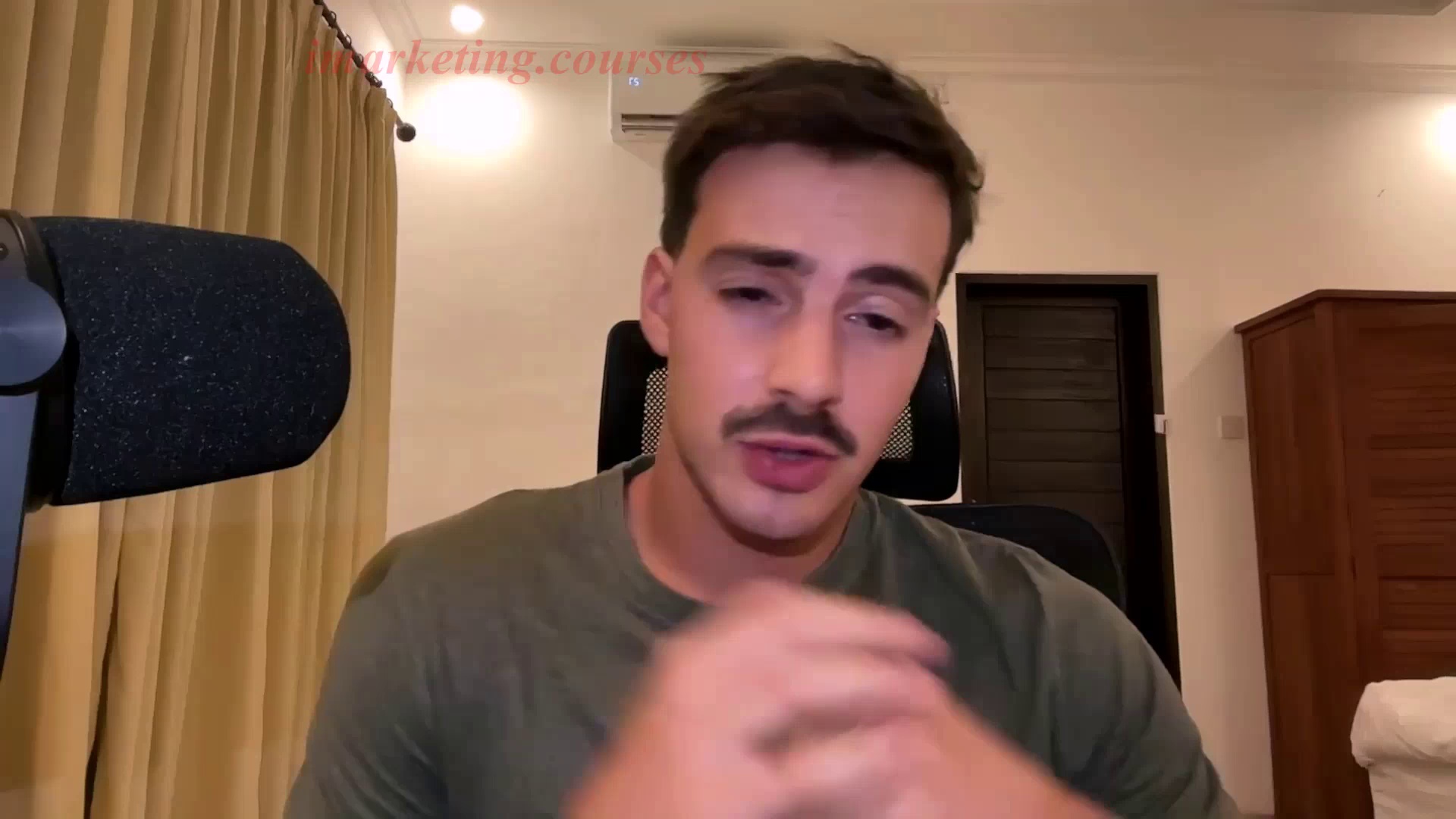
The narrator congratulates the listener on finishing a course. He notes that results may take weeks to appear. The course focused mainly on YouTube marketing for SaaS businesses.
The narrator states that the course information is not enough to build a successful SaaS business. He mentions other necessary elements like proper marketing channels, a great product, customer management, hiring practices, and email strategies.
The narrator offers an additional coaching program for $1,400. This program covers scaling a SaaS business from zero to 40, 60, 100K MRR. It includes:
1. A comprehensive course on marketing, client acquisition, customer support, and pricing techniques.
2. Weekly one-on-one calls with the narrator to discuss ideas and receive personalized suggestions.
3. Access to the narrator's current SaaS business strategies and experiences.
The narrator emphasizes the value of the program, stating that $1,400 is negligible compared to potential client acquisition. He offers assistance via Twitter or email even if the listener doesn't purchase the course.
.